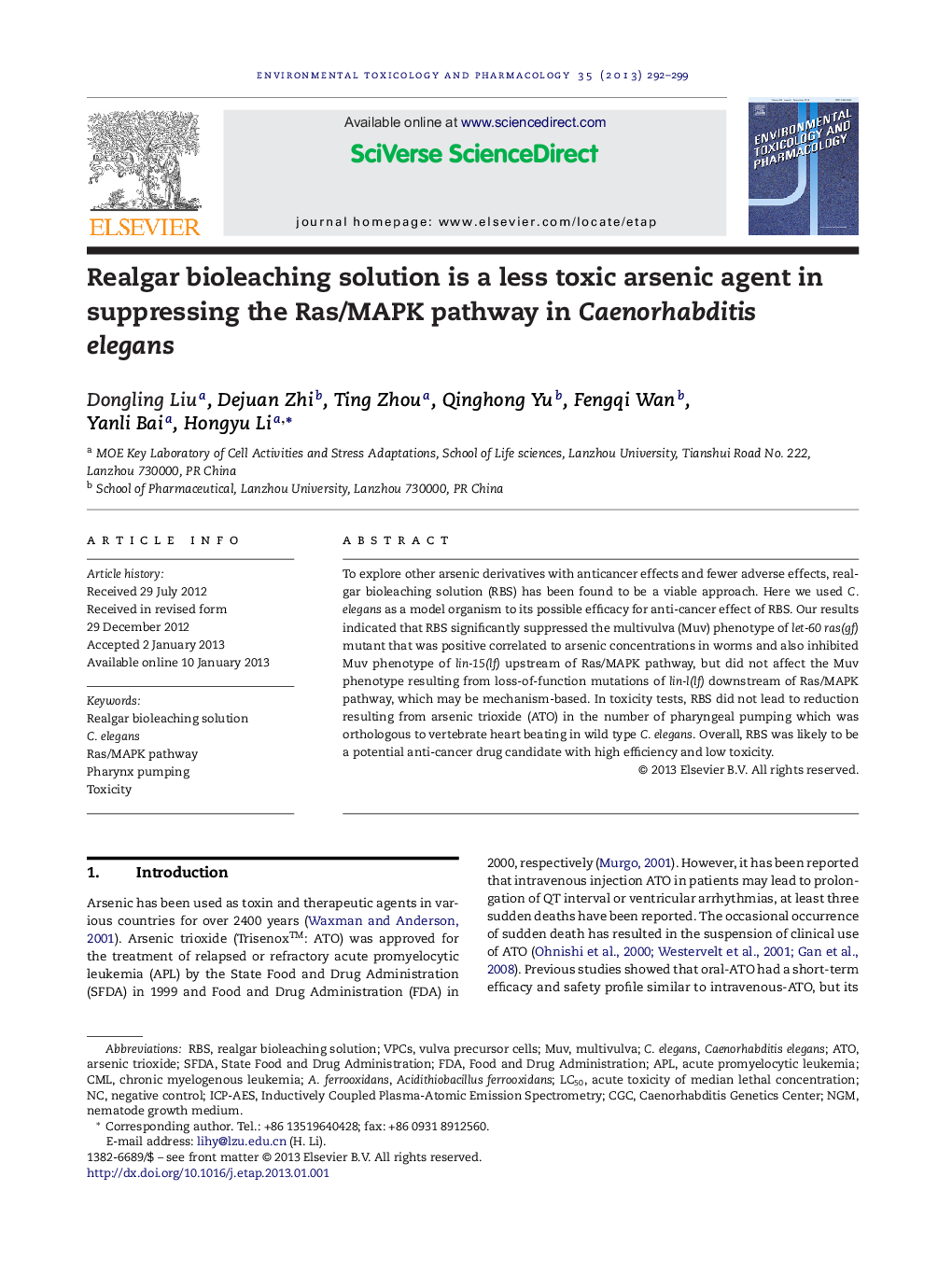| Article ID | Journal | Published Year | Pages | File Type |
|---|---|---|---|---|
| 2583236 | Environmental Toxicology and Pharmacology | 2013 | 8 Pages |
To explore other arsenic derivatives with anticancer effects and fewer adverse effects, realgar bioleaching solution (RBS) has been found to be a viable approach. Here we used C. elegans as a model organism to its possible efficacy for anti-cancer effect of RBS. Our results indicated that RBS significantly suppressed the multivulva (Muv) phenotype of let-60 ras(gf) mutant that was positive correlated to arsenic concentrations in worms and also inhibited Muv phenotype of lin-15(lf) upstream of Ras/MAPK pathway, but did not affect the Muv phenotype resulting from loss-of-function mutations of lin-l(lf) downstream of Ras/MAPK pathway, which may be mechanism-based. In toxicity tests, RBS did not lead to reduction resulting from arsenic trioxide (ATO) in the number of pharyngeal pumping which was orthologous to vertebrate heart beating in wild type C. elegans. Overall, RBS was likely to be a potential anti-cancer drug candidate with high efficiency and low toxicity.
► RBS inhibit gain-of-function of Ras/MAPK pathway in Caenorhabditis elegans. ► RBS in suppressing the Ras/MAPK pathway may be mechanism-based. ► RBS might not lead to QT prolongation resulting from ATO and showed lower toxicity.
